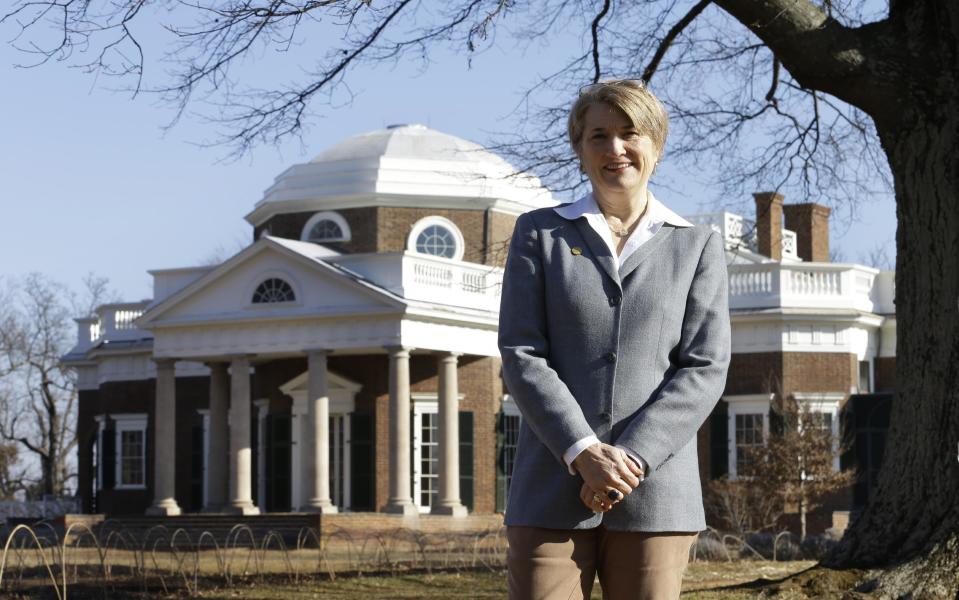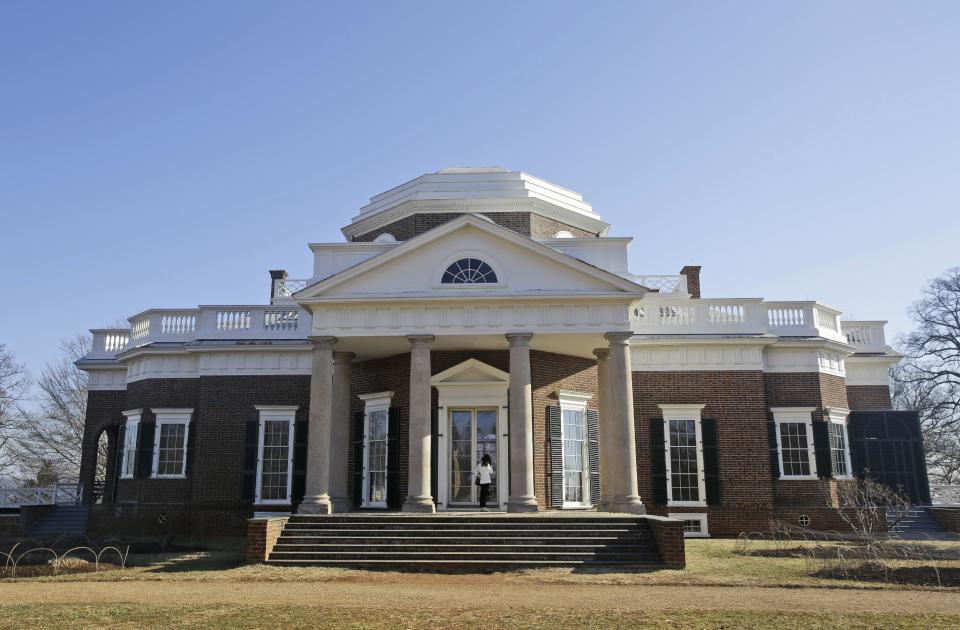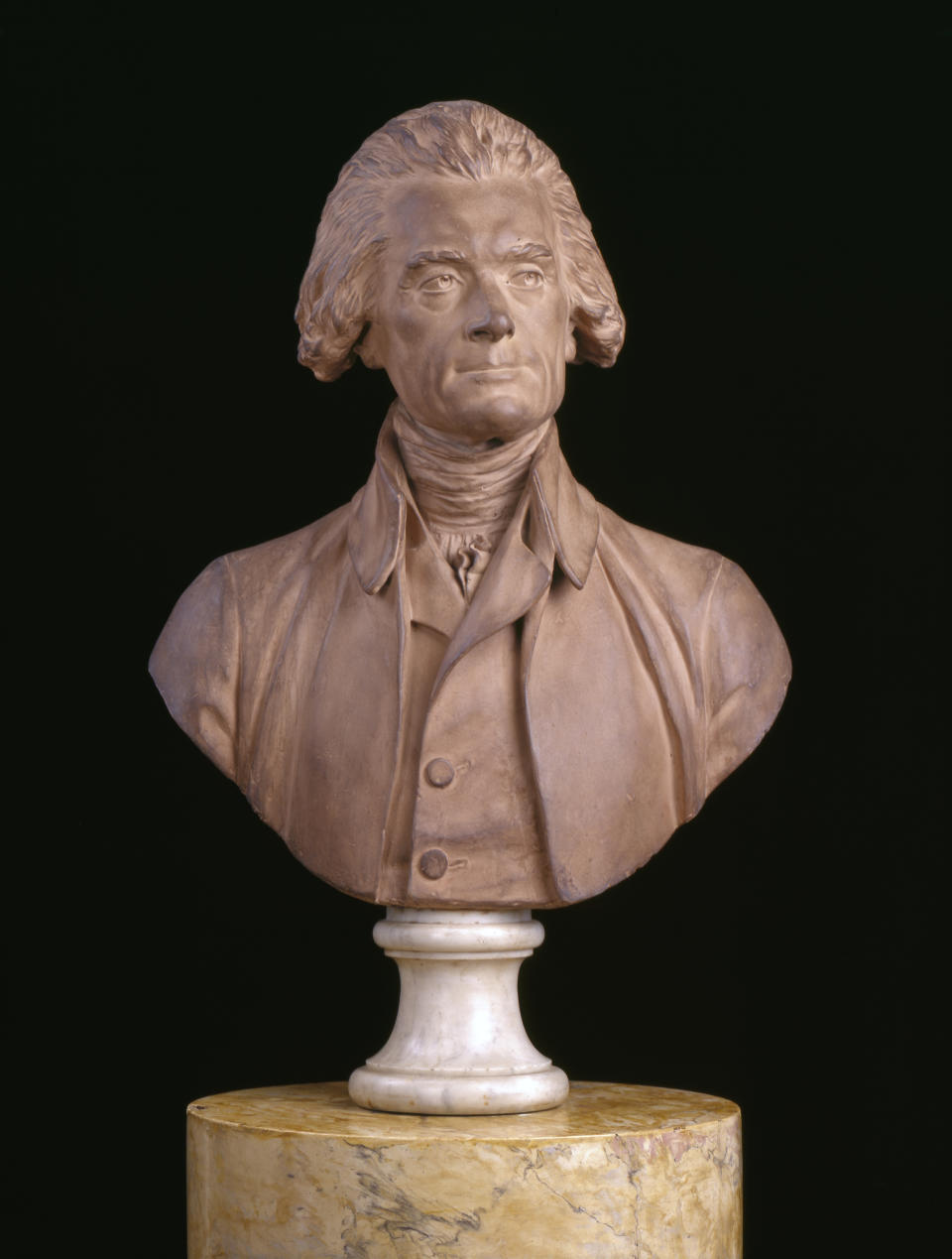French president to find familiar at Monticello
CHARLOTTESVILLE, Virginia (AP) — From the polished copper cooking pots Thomas Jefferson brought back from France to the dome atop Monticello, French President Francois Hollande should feel right at home Monday when he and President Barack Obama visit the third president's mountaintop plantation.
Jefferson was smitten with France — its wine, food and architecture — and much of that affection is still on full display at his former 2,500-acre (1,012-hectare) estate overlooking Charlottesville and the school he founded and designed, the University of Virginia.
"Jefferson is our most famous Francophile," said Leslie Greene Bowman, president and CEO of the Thomas Jefferson Foundation Inc., the private nonprofit that owns and operates Monticello. "You only have to look at Monticello to see how Jefferson incorporated in his home the cultural and intellectual vibrancy of France."
Monticello, a UNESCO World Heritage site, was abuzz with activity Friday ahead of the visit, along with work on continuing archaeological projects aimed at revealing new layers of Jefferson's life.
"I think it's going to be really exciting to share Monticello, which has a heavy French accent, with President Obama and President Hollande," Bowman said.
Despite Jefferson's love of France, Hollande's visit will be the first by a president of the country to Monticello, which has welcomed international dignitaries as diverse as Queen Elizabeth II, in 1976, to the Dalai Lama in 1993. Obama will also be making his first visit, although first lady Michelle Obama and daughters Malia and Sasha made the 120-mile trip from Washington in 2009 for a private tour. This will be the first time a sitting president has visited Monticello with a current foreign head of state.
Monticello's attraction, of course, has been Jefferson's towering stature as one of the nation's founders, the author of the Declaration of Independence and his intellect, which was applied to the creation of many innovations on display here, such as a revolving bookstand.
But for Hollande, Monticello represents Jefferson's love affair for France, and perhaps a break from his country's sputtering economy, a culture war over Socialist Party reforms, and his apparently robust and complicated romantic life.
Jefferson lived in Paris for five years, starting in 1784, succeeding another famous American, Benjamin Franklin, as minister to France. Like many American tourists who followed him, he soaked up the city's attractions — the restaurants, the music and the arts. He arrived in France with an interest in architecture, and it inspired him when he returned home.
The dome atop Monticello was modeled on the Hotel de Salm, a palace on the Seine. The Monticello dome, immortalized on the reverse side of the nickel, is believed to be the first atop any private residence in America.
Jefferson found inspiration during his many travels outside of Paris, as well, and he based his design of the Virginia Capitol in Richmond after the 1st century Roman temple in Nimes, in southern France. He wrote that he gazed at the French version "like a lover at his mistress."
Before returning to America in 1789, Jefferson sat for the celebrated sculptor Jean-Antoine Houdon and his depiction of Jefferson's likeness can be seen in the visitor center of Monticello. Through Jefferson's intercession, Houdon came to America to sculpt George Washington. His full-length statue is in the Virginia Capitol.
Jefferson's "gallery of worthies" at Monticello includes American statesmen such as Franklin and John Paul Jones, as well as Voltaire and the Marquis de Lafayette.
After his stay in France, Jefferson's return home to Virginia was followed by a prodigious haul: 86 crates of furniture, an architect's desk, silver goblets and much more, all arriving in Philadelphia in 1790 amid complaints by Jefferson about the size of the freight bill.
He also returned home with a love of French cuisine.
"After 1784, when he goes over to France, he never again doesn't have a chef that isn't trained in French cooking," Bowman said.
Jefferson's taste for French wine is reflected among the sloping landscape of Monticello, and the vineyards he cultivated remain among gardens of vegetables, fruits and flowers.
"We know he brought back a taste for pasta, some would say macaroni," Bowman said. "We also know he brought back plants for his garden at Monticello."
And, she said, he brought back ice cream.
Once he completed his assignment in France, Jefferson never returned to the country he so loved. He made it clear, however, which country came first in a rhetorical question he posed to himself.
"In what country on earth would you rather live? — certainly in my own, where are all my friends, my relations, and the earliest & sweetest affections and recollections of my life. — Which would be your second choice? — France."
___
Steve Szkotak can be reached on Twitter at http://twitter.com/sszkotakap.






